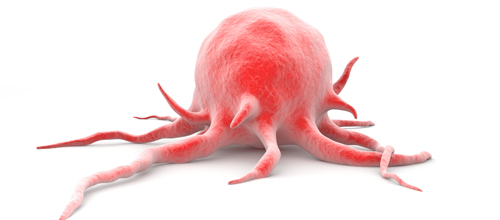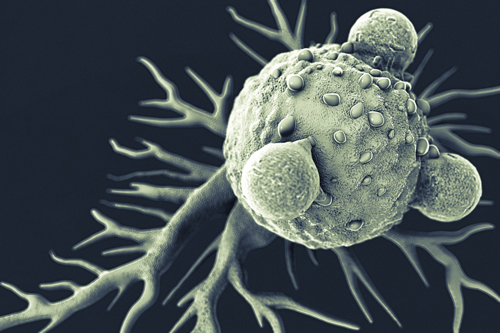A Tumor: Defined
When you hear the word tumor, you automatically think of cancer. But what really is a tumor? A tumor, or neoplasm, is a mass of abnormal tissue that arises when cells divided uncontrollably.
However, tumors aren’t always a cancer. Tumors can be benign or malignant.
- Benign tumors are usually harmless, localized to one area, and are non-cancerous. Benign tumors do not spread but may grow larger, obstructing organs or other structures. Examples of common benign tumors include lipomas, which are composed of fat cells, and angiomas, which consists of small blood vessels.
- Malignant tumors (cancer) have the ability to invade surrounding tissues, metastasize (spread throughout the body), and cause significant illness or death.
Malignant Tumor Types
From a histological standpoint, there are over 100 different types of cancer. A cancer is not always a solid tumor mass. Hematologic cancers can form, too, as with leukemia which begins in the blood-forming tissue of the bone marrow. Examples include:
- Sarcomas – arise from bone and soft tissue; examples include osteosarcoma and Kaposi sarcoma.
- Carcinomas – most common form of cancer that arises from epithelial cells; examples include basal cell carcinoma and adenocarcinomas (breast, prostate).
- Lymphomas – begins in lymphocytes (B or T cells); includes non-Hodgkin lymphoma and Hodgkin lymphoma.
- Leukemias – start in the blood-forming tissue of the bone marrow; examples are Acute lymphocytic leukemia (ALL) and Chronic lymphocytic leukemia (CLL).
- Melanomas – originates in melanocyte (pigment) cells leading to skin or eye cancers.
- Myelomas – begin in immune cells called plasma cells that build up in the bone marrow; multiple myeloma results in bone tumors throughout the body.
The Cancer Cell vs. the Normal Cell: What’s the Difference?
- Cancer cells are less specialized than a normal, healthy cell, and do not have specific biological functions. This allows them to continue dividing and invade surrounding tissues.
- Cancer cells can evade apoptosis – the signal that alerts cells to begin programmed cell death and stop dividing.
- Cancer cells can take advantage of their microenvironment – for example, they can signal the beginning of angiogenesis when surrounding cells grow blood vessels to help feed the cancer cells.
- Cancer cells also can escape or “hide” from the immune system, which normally removes damaged or abnormal cells from the body. In fact, with immunotherapy researchers are now learning how to harness the power of the body’s immune system to target and kill cancer cells.



